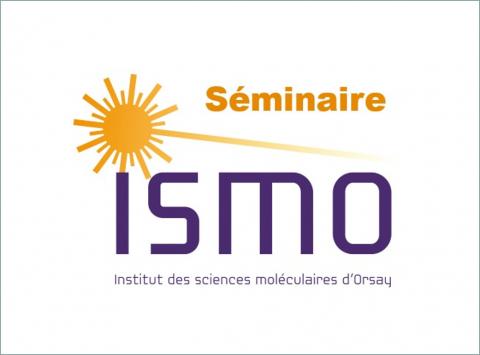
Séminaire de Philippe Carbonnière
GSAM : A global search algorithm to find the low-lying conformers of atomic and molecular clusters for the evaluation of their (vibrational) properties.
Philippe Carbonnière
Groupe de Chimie Analytique Physique et Théorique, IPREM, Pau
The computation of the vibrational signatures of a molecular system relies on the proper location of its associated nuclear configuration which corresponds to a particular minimum (or a particular set of minima) within a potential energy surface (PES).
In small and semi-rigid systems or even for larger and floppy carbon-based compounds exhibiting a priori well-characterized minima, the optimized geometries of the lowest energy equilibrium conformations may be obtained from local search algorithms. The (an)harmonic vibrational signatures are then computed from time independent/static or time dependent/dynamic approaches by starting from the geometries obtained at 0K or at finite temperature after a step of thermalization.
For the vast majority of molecular systems for which the group of physically reasonable conformer structures cannot be guessed, global search algorithms are used. An effective global search algorithm has been developed in our laboratory in a home made code called GSAM (Global Search Algorithm of Minima exploration) for finding the most stable isomers of atomic or molecular clusters.
Such structural investigations were carried out on several molecular clusters for which anharmonic computations were performed with static or dynamics approaches. The cases of the nucleic acid bases in their micro-hydrated forms, and the case of small clusters of nitrate aerosol will be presented as illustration of the theoretical tools used. More recently, the code has been succesfully used for tackling understanding of enantiocontrol and chemical storage hydrogen mechanisms at the atomistic level for some catalytic processes. This aspect will be also presented.
Contact pour disposer du lien :
http://www.ismo.universite-paris-saclay.fr/spip.php?article2729
GSAM : A global search algorithm to find the low-lying conformers of atomic and molecular clusters for the evaluation of their (vibrational) properties.
Philippe Carbonnière
Groupe de Chimie Analytique Physique et Théorique, IPREM, Pau
The computation of the vibrational signatures of a molecular system relies on the proper location of its associated nuclear configuration which corresponds to a particular minimum (or a particular set of minima) within a potential energy surface (PES).
In small and semi-rigid systems or even for larger and floppy carbon-based compounds exhibiting a priori well-characterized minima, the optimized geometries of the lowest energy equilibrium conformations may be obtained from local search algorithms. The (an)harmonic vibrational signatures are then computed from time independent/static or time dependent/dynamic approaches by starting from the geometries obtained at 0K or at finite temperature after a step of thermalization.
For the vast majority of molecular systems for which the group of physically reasonable conformer structures cannot be guessed, global search algorithms are used. An effective global search algorithm has been developed in our laboratory in a home made code called GSAM (Global Search Algorithm of Minima exploration) for finding the most stable isomers of atomic or molecular clusters.
Such structural investigations were carried out on several molecular clusters for which anharmonic computations were performed with static or dynamics approaches. The cases of the nucleic acid bases in their micro-hydrated forms, and the case of small clusters of nitrate aerosol will be presented as illustration of the theoretical tools used. More recently, the code has been succesfully used for tackling understanding of enantiocontrol and chemical storage hydrogen mechanisms at the atomistic level for some catalytic processes. This aspect will be also presented.
Contact pour disposer du lien :
http://www.ismo.universite-paris-saclay.fr/spip.php?article2729
